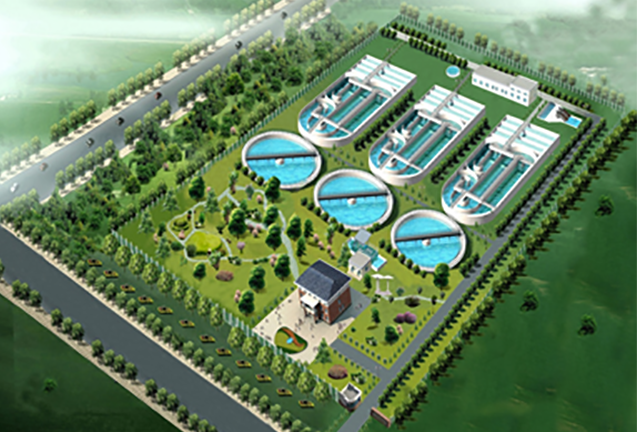Technology Introduction
Domestic sewage not only contains plenty of organic matter, such as cellulose,starch,sugar and fat protein, but also pathogenic bacteria, virus,Parasite eggs and more of suspended solid. At present our country regulations require that the final discharge water quality should be in accordance with the table 1 level A,class one standard of pollutants for municipal wastewater treatment plant (GB18918-2002) .
Urban sewage treatment process not only can remove organic pollutants and suspended solids, but also nitrogen and phosphours. The urban sewage treatment process is mainly divided into three stages: the primary level based on physical and chemistry methods, the secondary level mainly using biochemistry method, and the depth level mainly adopting physical filtering .
Process flow: "grating + sand basin + modified A2/O + secondary sedimentation tank + cloth filter + ultraviolet disinfection".The suspended solids and bulky particulate matter of inflow sewage could intercept by grating,then the sewage come into the sand basin to remove sand to prevent the deposition in the subsequent structures. Furthermore, the effluent flow through the hardcore of the whole sewage treatment system-- modified A2/O, successively flowing through anaerobic tank; anoxic tank and aerobiotic tank.,at the same time,the mixture backflow into the anoxic tank; effluent flow into the secondary sedimentation to make the sludge and water to be separated. While the sludge backflow into the biochemistry system, and the sewage flow into cloth filter, then into the ultraviolet disinfection pool, finally up-standard discharge.
Process Flow Chart
The process flow chart of "grating + sand basin + modified A2/O + secondary sedimentation tank + cloth filter + ultraviolet disinfection" is as follows:

Treatment Effects
The advantages of the process including low land occupancy, stable operation,high impact load capacity, less sludge production, excellent effluent quality and good nitrogen and phosphorus removal capacity, the treatment effect is very significant especially for the influent with high NH4+-N,and less carbon source.
Advantages
Modified A2/O (oxidation ditch) Process is an improved solution of low phosphorus and nitrogen removal capacity in case of lacking of carbon , it is provided with superior performance in saving energy and impact load capacity.
This process not only retains the character of traditional A2/O and oxidation ditch , but also combines biochemical reaction with back-flow. It saves lots of energy consumption, such as saving civil engineering cost, facilities and pipe fitting expenses, and reducing head loss and back-flow lifting.
This process has reliable operation and high phosphorus and nitrogen removal capacity, in addition, it can prevent the growth of filamentous bacteria in the sludge and sludge bulking. There are a number of successful application cases in China.
Application Case
One of the urban sewage treatment engineering in Jiangxi Province
Construction Time: 2014
Nature of the sewage: Domestic sewage
Scale: 20,000 m3/d
Main process: grating + sand basin + modified A2/O + secondary sedimentation tank + cloth filter + ultraviolet disinfection
Requirement: table 1 level A,class one standard of pollutants for municipal wastewater treatment plant (GB18918-2002) .

